The short history of Sweden's wheeled tracked tanks
At the turn of the twenties and thirties, Sweden actively cooperated with Germany in the field of tank building. The result of joint work, initiated by the German side, was several interesting projects of wheeled-tracked tanks. However, story these projects were short-lived. None of them could be brought to series and exploitation, although with their help it was possible to work out original ideas and understand their futility.
German roots
In the twenties, several countries at once worked out the concept of a chassis with a wheeled and tracked chassis for alternate use. It was assumed that the wheels will allow you to move quickly on the highway, and the tracks will provide off-road patency. German engineer Otto Merker worked on this problem together with other specialists. In the middle of the decade and later, he proposed, manufactured and demonstrated several variants of the combined chassis.
In the late twenties, Germany and Sweden established military-technical cooperation. It was assumed that German enterprises would develop new models of military equipment, and production and testing would be carried out at Swedish sites. In particular, the AB Landsverk plant in Landskrona was appointed the manufacturer of German-Swedish tanks. He was to implement projects of various companies, incl. plant Maschinenfabrik Esslingen AG (Esslingen), where O. Merker worked at that time.
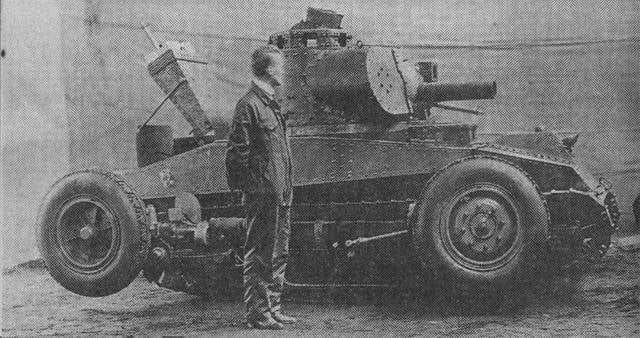
Tank Landsverk L-5 on tracks. Photo Aviarmor.net
In 1928, Merker was sent to Sweden, where he was given the opportunity to build and test a chassis of his own design. Officially, it was considered as the basis for promising tractors, although military use was not excluded. At the same time, unlike other "tractors" of German design, the Merker chassis was not classified.
"Wheeled-tracked combat vehicle"
In Swedish sources, the chassis of the "joint" development is called Räder-Raupen Kampfwagen m / 28 ("Wheeled-tracked combat vehicle arr. 1928") or Landsverk L-5. The original German designation is unknown. At the same time, six experimental machines were hidden under one name at once, slightly different from each other. The first two were built in Landskrona in 1928-29, and four more in Esslingen.
Product L-5 was a machine with an open body-bath. 50 hp engine placed in front, there was also a gearbox with 8 forward and reverse speeds. The rest of the transmission units were placed in the stern. A pair of control posts was provided for driving in different directions. No additional equipment was available - and was not required due to the nature of the project. In its original form, the chassis weighed 5,3 tons.
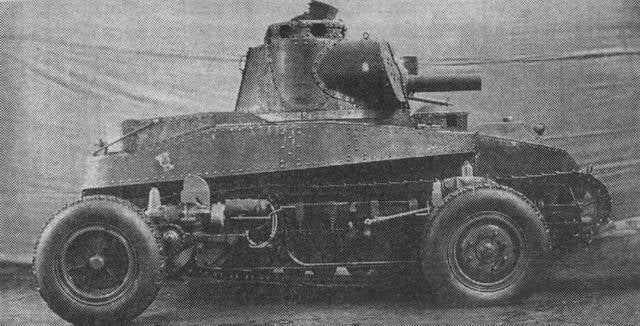
Tank on wheels. Photo Aviarmor.net
The tracked chassis was placed directly on the sides of the hull. It had a stern drive wheel and many small road wheels, covered with a side sheet. The latter housed wheel travel units. Four wheels were installed on their own levers with an electric or hydraulic drive for transfer to the working or "stowed" position. Changing the undercarriage took only a few minutes; control was carried out from the driver's post. The leading wheels were the rear wheels, which were connected to the leading sprockets of the caterpillar using a chain drive. According to calculations, the maximum speed on wheels exceeded 45 km / h, on tracks - 23 km / h.
O. Merker's chassis tests began in the first months of 1929. Several prototypes were run in parallel in Sweden, Germany and at the Soviet Kama school. It was possible to confirm the fundamental performance of the original wheeled-tracked system, but its implementation in the form of the L-5 was unsuccessful. The landing gear proved to be narrow, which threatened to roll over in difficult terrain. When driving on wheels, the tracks did not rise enough above the road and could cling to small obstacles. There were other complaints about the design of the car, but not about the architecture of the chassis.
In the same year, three of the six chassis received the original armored hulls. The hull had a complex shape with an inclined front plate and pronounced side boxes. We also developed a turret for the 37 mm Maxim Flak M14 cannon. A characteristic semicircular niche was provided for its drum magazine on the right side of the tower. Two machine guns were placed in the turret and in the rear of the hull.
A full-fledged L-5 tank weighed 8,5 tons and was inferior to the original chassis in running characteristics in all modes. Due to the introduction of weapons, the crew grew to four people: two drivers, a gunner and a commander-loader.
The installation of the hull and turret led to a heavier machine and a deterioration in driving performance, which made further development of the existing platform considered meaningless. In 1931, the towers were removed from three tanks. weaponsby making them educational. In this form, they were limitedly exploited over the next few years.
Cooperation continues
As a result of the Räder-Raupen Kampfwagen m / 28 project, the Reichswehr lost interest in wheeled-tracked armored vehicles, and this direction was closed in favor of other projects. However, O. Merker continued his work and proposed a new version of the tank, now known as the L-6. The Swedish Artillery Directorate (Kungliga Arméförvaltningens artilleridepartement or KAAD) became interested in this development.
The L-6 tank was supposed to have a rear-engined layout and a modified wheeled chassis with a different wheel movement mechanism. The mechanism was more compact, which made it possible to cover the chassis with an onboard screen. Due to the 150-horsepower engine, the maximum speed on wheels was planned to be increased to 150 km / h.
Landsverk was commissioned to finalize the L-6 project, taking into account the accumulated experience and available technologies. This work was completed in mid-1931 and led to the L-30 project, also known as the Räder-Raupen Kampfwagen RR-160. Subsequently, the designation fm / 31 was introduced.
When creating the new L-30, most of the units of the original L-6 were completely redesigned. The design and appearance of the hull and turret were changed, a new tracked chassis and an improved wheel lifting mechanism were created. The armament corresponded to the previous project. At the same time, the L-30 tank was longer than the previous L-5, and its mass reached 9,7 tons.
The position of the two wheels on one side was determined by the lever and the rod. Both side rods were controlled by a common crank mechanism - the wheels were moved synchronously by one hydraulic drive. The new mechanism was simpler and more reliable than the previous one.
The prototype was built in the fall of 1931, and the hull was made of non-armored steel. No other L-30 prototypes were built. As the tests were carried out and the design was improved, the tank was able to reach a speed of 35 km / h on tracks and 75 km / h on wheels. Cross-country capacity on wheeled and crawler tracks was in line with expectations. At the same time, claims and suggestions appeared, which were taken into account when further improving the project.
Comparison
Together with the L-30, the Landsverk L-10 light tank on a similar tracked chassis entered trials. It compares favorably with the wheeled tracked vehicle with a greater thickness of armor, a simpler design and other features, incl. affecting overall combat capabilities. Based on the results of various tests, both tanks were refined. In a number of cases, a major design change was envisaged.
The armor and the turret were rebuilt, new weapon options were considered. All these measures led to the fact that the L-30 was heavier to 11,5 tons. There were plans to use more powerful engines. At the same time, despite all the improvements, the tank on the combined chassis was inferior to the purely tracked model.
In 1935, KAAD came to the obvious conclusion: the L-10 tracked tank was more successful, and the development of the L-30 did not make sense. German specialists watched the Swedish tests, and they did not change their opinion about the wheeled-tracked vehicles. As a result, the simpler L-10 was recommended for the series, and the only L-30 or fm / 31 was transferred to training.
The only tank with an unusual appearance worked in a new location for several years. In 1940, he developed a resource and was decommissioned. Unlike other unnecessary vehicles, this tank was kept. Later, it entered the exposition of the Arsenalen Museum and, along with a number of other products, demonstrates the early history of Swedish tank building.
The L-5 and L-30 projects took an important place in the history of the tank industry in Germany and Sweden. Thanks to these projects, the Swedish industry gained access to advanced foreign developments and technologies. In addition, the two countries were able to scrutinize the promising concept and draw conclusions. The history of German-Swedish projects of wheeled-tracked tanks was short-lived, but several years were enough to accumulate the necessary experience.
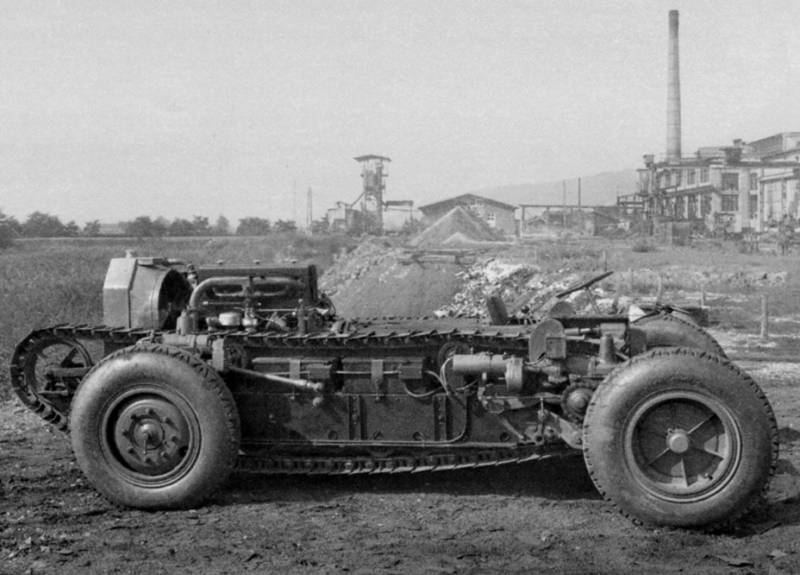
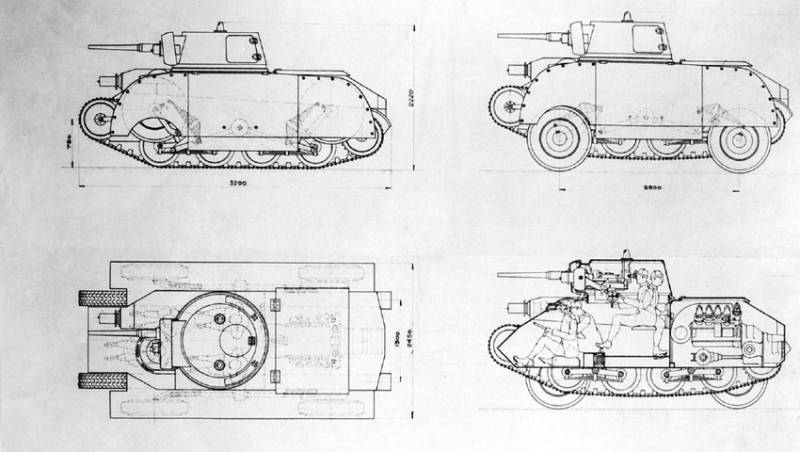
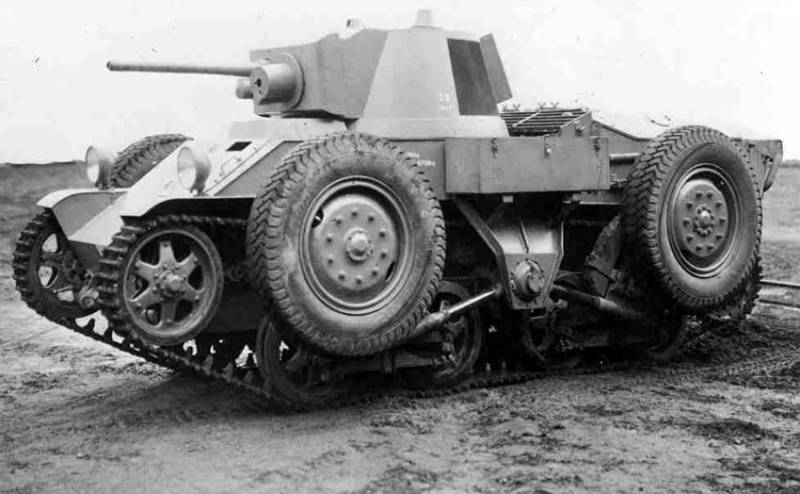
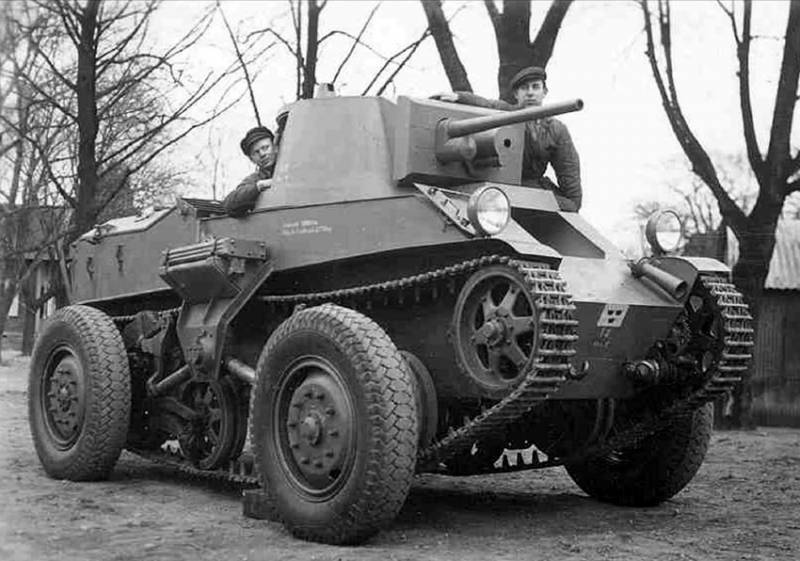
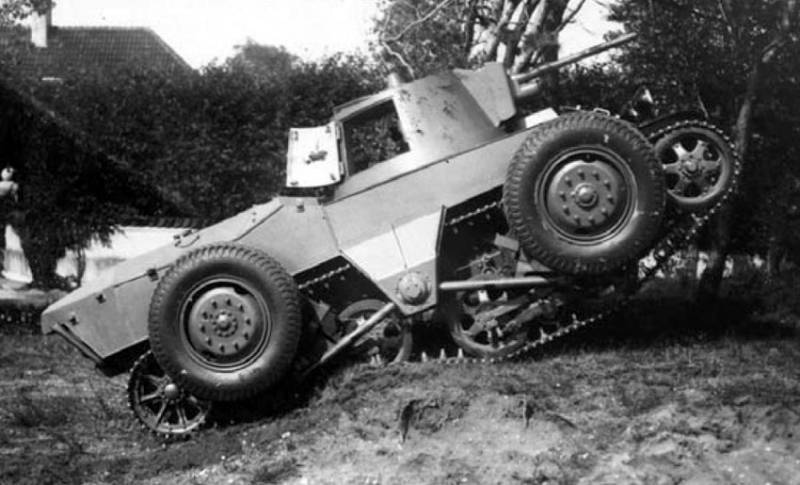
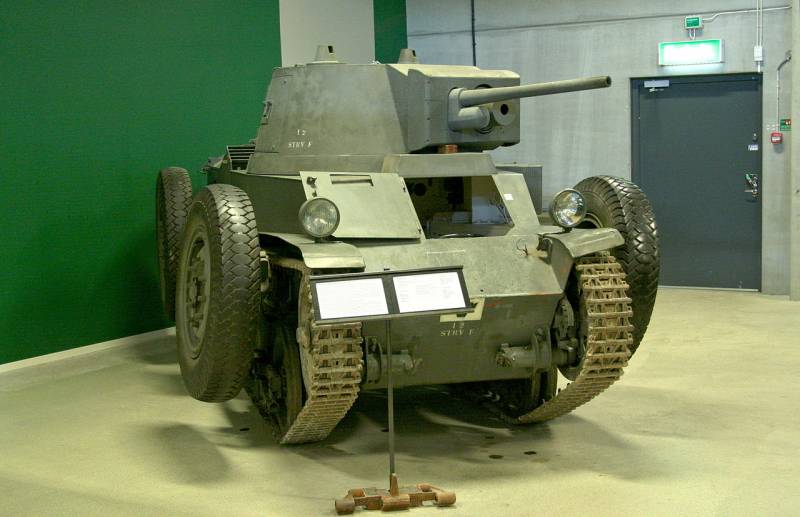
Information